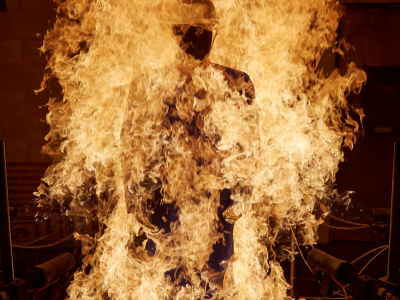Zarheer Jooma, P.E., Brian Shiels and Stacy Klausing, M.S.

Zarheer Jooma, P.E., Brian Shiels and Stacy Klausing, M.S.
Zarheer Jooma, P.E., is a partner at e-Hazard (https://e-hazard.com). He has convened and chaired arc flash safety standards and is a member of both ASTM F18 and IEC TC 78. Jooma performs electrical network design, arc flash studies, electrical safety training, incident investigations and auditing. He is the technical paper review chair for two IEEE journals and chair for the IEEE Electrical Safety Workshop 2025.
Brian Shiels is the service line manager for the ArcWear (https://arcwear.com) division of Kinectrics and a leading expert in the testing and development of arc-rated clothing. His professional experience includes quality management as well as the development and testing of thermal protective clothing and equipment. Among other responsibilities, Shiels is a longstanding member of a variety of standards development organizations, including ASTM, NFPA, AATCC and ISO. He earned his master’s degree in textile chemistry from North Carolina State University, with a special focus on protective clothing.
Stacy Klausing, M.S., is a senior project manager at ArcWear. Her professional experience includes project management in testing laboratories, testing and evaluating fabric related to PPE, and execution and management of an ISO 17025-accredited quality system. She earned her master’s degree from the University of Kentucky and is a Six Sigma Green Belt from North Carolina State University.

Variabilities in Electrical Arc Flash Protection
Accuracies are synonymous with safety and science. While many perceive that electrical safety needs to be highly exact, this article aims at creating awareness of why sticking to the basics is effective. But before we delve into variability in electrical engineering, safe electrical work practices and electrical PPE, here is a brief story my second-year […]

Thermal Protection for Electrical Work
Thermal protective apparel for electrical work appears to have reached a point of inflection from “What needs to be done?” to “How can it be improved?” Looking at the safety standards recently approved for publication,

